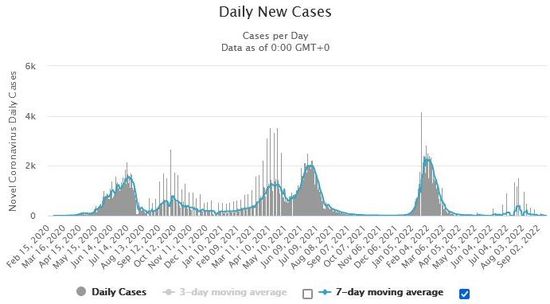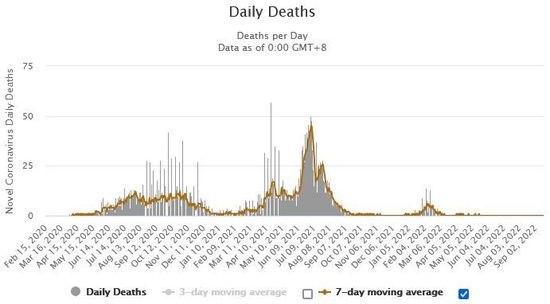You are here: HOME (our tours) > COVID-19 IN OMAN
Covid-19 in Oman
Last update: 18/09/2022
Travelling to Oman… without restrictions!
|
|
Oman is open! All the covid-19-related restrictions for travelling to Oman were lifted on the 22nd of May 2022. Therefore, it is possible for anyone with a visa or a visa exemption to enter Oman. Just in case, people aged 18 and older should carry their vaccine certificate (with QR code) showing at least 2 doses of one of the nine vaccines approved by the Omani government* - with a second dose received at the latest 14 days before the entry in Oman. * Pfizer-BioNTech, Moderna, Oxford-AstraZeneca, AstraZeneca-Covishield, Johnson & Johnson (only 1 dose is necessary), Sinovac, Sinopharm, Sputnik V, Covaxin. |
Beware that some airlines may have more restrictive rules.
The state of the covid-19 pandemic in Oman
In Oman, life went back to normal and there is no longer any restrictions linked with covid-19.
Overall, Oman managed rather well the coronavirus epidemic crisis, with to this day 950 deaths per million people, compared with 1600 to 3000 in UK, Germany, Italy, Belgium, Switzerland or France (source: www.worldometers.info/coronavirus/).
Among other factors, the quality of the health-care system, the Omani government’s early implementation of the restrictions and the very gradual return to normal allowed to avoid a strict lockdown of the population and the overwhelming of the health-care system during the three first waves. The Delta strain then arrived in the country, at a time when the vaccination rate was still low. This led to the fourth wave of June-July 2021, by far the most virulent one, which caused for the first time the saturation of the hospitals.
Among other factors, the quality of the health-care system, the Omani government’s early implementation of the restrictions and the very gradual return to normal allowed to avoid a strict lockdown of the population and the overwhelming of the health-care system during the three first waves. The Delta strain then arrived in the country, at a time when the vaccination rate was still low. This led to the fourth wave of June-July 2021, by far the most virulent one, which caused for the first time the saturation of the hospitals.





